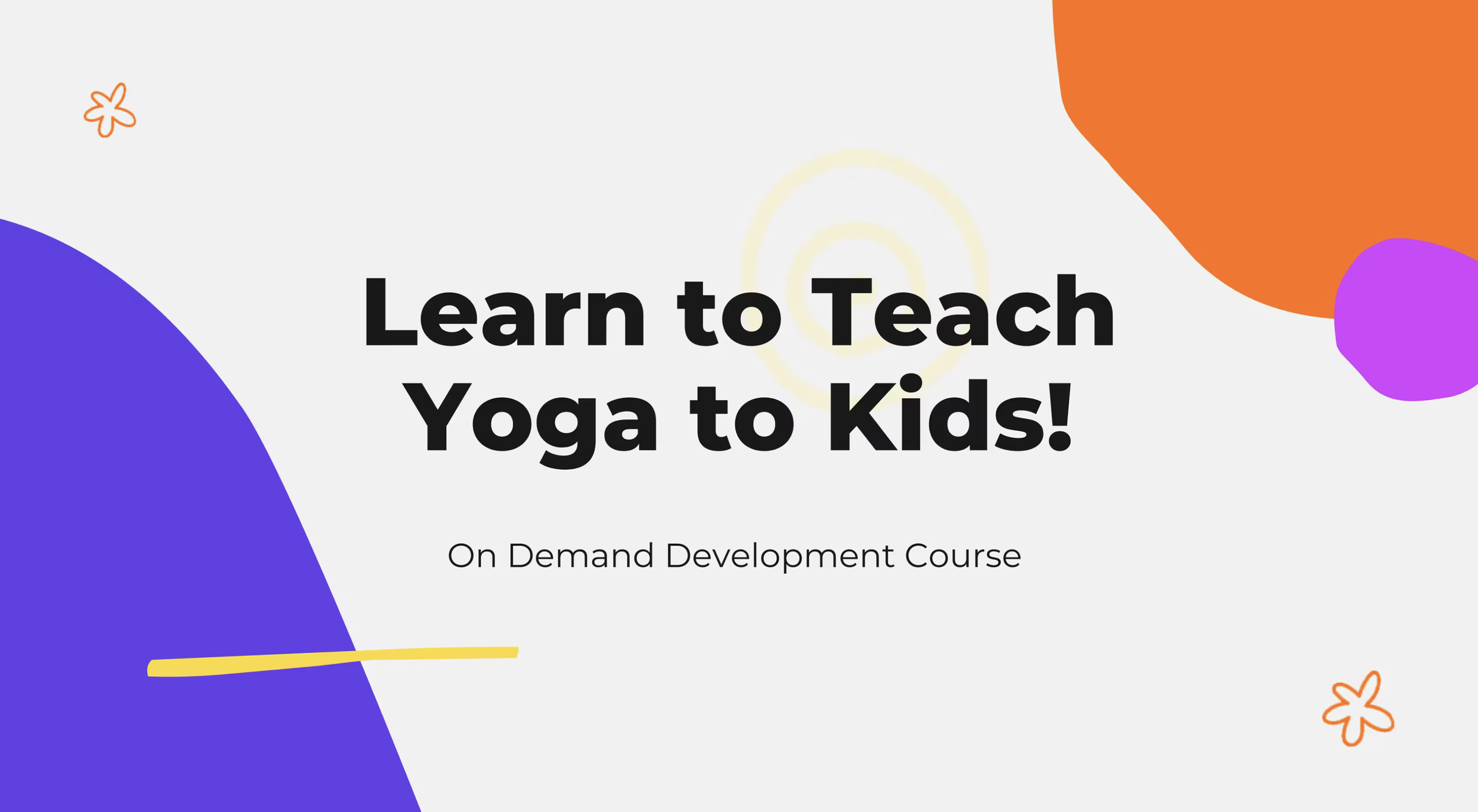Children’s Mindfulness: How to Teach Meditation to Kids?
In the magical world of childhood, where each heartbeat holds the promise of adventure, introducing meditation to kids is like planting seeds of serenity. It's an invitation for young minds to discover their own sanctuary within, amidst the joyful buzz of their days.
Additionally, weaving meditation into your family routine isn't just about finding inner peace—it's like sprinkling magic on your everyday life! It brings a sense of calmness, better family energy, and improved sleep quality. Think of it as an incredibly awesome family ritual that not only boosts each person's happiness, but also weaves tighter threads in your family tapestry, creating a cozy and connected home sweet home!
If you're keen on discovering the joy of practicing yoga and meditation with your children in a secure setting, explore our on-demand videos or online trainings tailored for both parents and professionals. These options are more cost-effective than traditional trainings and offer great flexibility!
Imagine sitting with your children quietly waiting for something special. We use simple words, stories, and fun games to show them how to be still and pay attention to their breath. It's like having a peaceful friend inside of us.
Want to know everything about mindfulness for children? Wondering when to introduce it and what types of meditations suit different age groups? Keep reading – all the answers are right here in this article!
Is it healthy for kids to meditate?
Absolutely! Meditation is beneficial and healthy for children. Numerous studies suggest that mindfulness meditation can have positive effects on a child's mental, emotional, and physical well-being.
Here are some potential benefits of meditation for kids:
Stress Reduction: Meditation helps children develop tools to manage stress and anxiety. Learning to focus on the present moment can alleviate worries about the past or future.
Improved Focus: Regular meditation practice can enhance a child's ability to concentrate and pay attention. It may contribute to better academic performance and learning outcomes.
Emotional Regulation: Meditation teaches children to observe their thoughts and emotions without judgement. This can lead to improved emotional regulation, helping them navigate challenging situations with greater ease.
Better Sleep: Mindfulness meditation has been linked to improved sleep quality. Children who practice meditation may experience better sleep patterns, leading to overall better health.
Enhanced Self-Awareness: Meditation encourages self-reflection and self-awareness. Children who practice mindfulness may develop a better understanding of their thoughts, feelings, and behaviors.
Increased Empathy: Mindfulness practices often promote empathy and compassion. Children who meditate may develop a greater sense of empathy towards themselves and others.
Social Skills: Improved emotional regulation and increased empathy can contribute to better social interactions. Meditation can enhance a child's ability to communicate and connect with their peers.
Boosted Resilience: Learning mindfulness can contribute to increased resilience in the face of challenges. Children may develop a more positive mindset and the ability to bounce back from setbacks.
It's important to note that meditation should be introduced in a developmentally appropriate manner, considering the age and individual needs of the child.
If you want to know the best ways to teach meditation to kids, keep on reading!
At what age can kids start meditating?
The journey into meditation for children is a wonderfully versatile one, with the potential to commence at any age. Even babies can benefit from soothing sounds or guided imagery, fostering a sense of calmness and relaxation. This early exposure lays the groundwork for cultivating a sense of tranquillity and mindfulness from the very beginning of their lives.
As the child grows, around the age of 5, introducing more specific meditation techniques such as mantra, mudra, or simple breathing exercises becomes an opportune moment. At this stage, children typically exhibit a slightly longer attention span, and an increased ability to follow directions. Utilizing these age-appropriate techniques not only captures their interest, but also lays the groundwork for essential skills in self-awareness, emotional regulation, and focus, setting the stage for a lifelong journey of mindfulness. It's crucial to adapt the approach to the child's unique developmental stage and interests, ensuring that the introduction to meditation remains a positive and engaging experience.
How do you teach a little child to meditate?
Guiding children in meditation can pose some challenges: How can you ensure it remains engaging? How can you teach meditation to young children without the risk of it becoming a monotonous activity?
At this point, you probably understand that teaching meditation to kids requires a gentle and age-appropriate approach. Below are some strategies tailored to different age groups:
Infants and Toddlers (0-2 years)
Create a calm environment: Provide a quiet space with soft lighting and soothing sounds.
Gentle touch: Use gentle touch or rocking motions to create a sense of comfort.
Incorporate lullabies: Sing or play soft lullabies to create a peaceful atmosphere.
Preschoolers (3-5 years)
Short and simple activities: Keep sessions brief. Use age-appropriate language and short and simple affirmations such as “I am happy” and “I am safe.
Imaginative play: Introduce mindfulness through imaginative play such as pretending to be animals, or going on a "mindful adventure."
Breathing buddies: Use a soft toy as a "breathing buddy" to teach children deep belly breathing.
Early Elementary (6-8 Years)
Guided visualizations: Introduce short guided visualizations with simple, relatable scenarios.
Breathing exercises: Teach basic breathing exercises such as counting breaths, or using a breathing ball.
Mindful coloring: Combine meditation with creativity through mindful coloring activities. Download these free mandalas!
Late Elementary (9-12 Years)
Guided meditations: Use age-appropriate guided meditations that involve visualizations or storytelling.
Breathing techniques: Introduce more advanced breathing techniques, such as diaphragmatic breathing or box breathing.
Mindful movement: Incorporate gentle yoga or stretching exercises into a meditation practice.
Teenagers (13-18 Years)
Guided visualizations and breathing techniques: Use guided meditations that contain visualizations, age-appropriate language and engaging stories.
Journaling: Encourage reflective journaling to help children express and understand their thoughts and emotions.
Group activities: Consider group meditation sessions or mindfulness classes for teenagers.
Regardless of the age group, key elements of mindfulness meditation include keeping sessions short, using engaging and age-appropriate language, incorporating playfulness, and being flexible with your approach. The goal is to make meditation a positive and enjoyable experience that fosters a lifelong appreciation for mindfulness.
Still unsure about how to meditate with the children in your life? Explore on-demand videos or online trainings, and become the best meditation guide for kids!
The 3 Best Meditation Techniques for Children
Numerous meditation techniques cater to children. By enrolling in one of our trainings, you'll gain insights into effectively instructing them! However, let's take it step by step.
Here are the three primary techniques for teaching meditation to children:
Mindful Breathing: Guide children to settle into a comfortable sitting or lying position, and encourage them to take slow, deep breaths, counting to three with each inhalation and exhalation. Direct their attention to the sensations of their breath, whether at the nose or in the belly. If their mind starts to wander, gently steer them back to focus on their breath, fostering a sense of mindfulness and presence.
Guided Imagery: Establish a tranquil setting and invite children to close their eyes. Employ a gentle and soothing voice to lead them on an imaginative journey, perhaps strolling through a serene forest or drifting on a soft cloud. Foster their creativity by encouraging them to vividly visualize the details of this imaginary experience, allowing them to fully immerse themselves. Through this technique, creativity and relaxation intertwine, offering a mindful escape into a world of calming imagery.
Find free guided meditation on our Insight Time page: Yogi Beans Children Meditation. For additional resources on mindfulness and yoga for children, check out our children's yoga book.
3. Body Scan Meditation: Guide children to assume a comfortable position, and direct their attention systematically to various parts of their body, beginning with the toes and progressing upward. Prompt children to observe any sensations or tension in each area. As their focus traverses each body part, encourage children to release tension and let go of stress.
Connect with us!
Welcome Friends!
Yogi Beans is a yoga and wellness company for children. Come make the world a brighter place with us!





